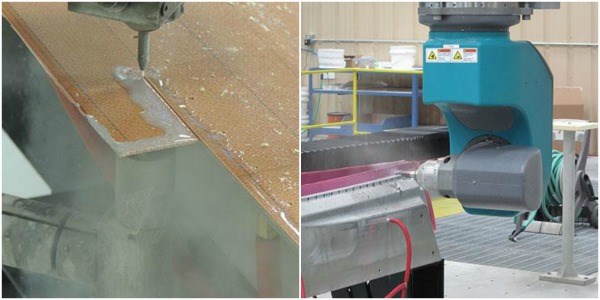When to Waterjet, When to Mill
A composite parts manufacturer in Nebraska recently installed a combined five-axis waterjet/milling machine to position itself to win large-scale aerospace work it sees on the horizon.
Share







This Composites Machining Cell enables Royal Composites to perform both five-axis waterjet and milling operations for large aerospace components.
Abrasive waterjet machines offer distinct advantages for trimming composite materials. For example, waterjet machining has inherently low cutting forces, so fixtures need not be as bulky as those required for conventional milling operations. Plus, garnet abrasive media serve as a waterjet stream’s “cutting edges,” and fresh media are continually introduced into the stream. Therefore, the stream’s cutting edges are always sharp, whereas conventional routing and drill bits can wear, possibly resulting in delamination or burred edge finishes. However, in some cases, milling is the only viable machining process due to fixturing interference or other issues.
In this story, learn how will use a machine that features both five-axis waterjet and milling capabilities to perform both of those operations as it goes after large-scale aerospace work.
Related Content
-
Ceratizit Product Update Enhances Cutting Tool Solutions
The company has updated its MaxiMill 273-08 face mill, WPC – Change Drill, as well as the HyPower Rough and HyPower Access 4.5-degree hydraulic chucks.
-
Emuge-Franken End Mill Wins ANCA's Tool of the Year Award
Emuge-Franken received the award for its specialized tool based on the new Cera-Cut end mill design.
-
Tungaloy Drills, Milling Inserts Provide Enhanced Stability
Tungaloy has expanded its DrillForceMeister and TecMill lines with new drill bodies and milling inserts.












